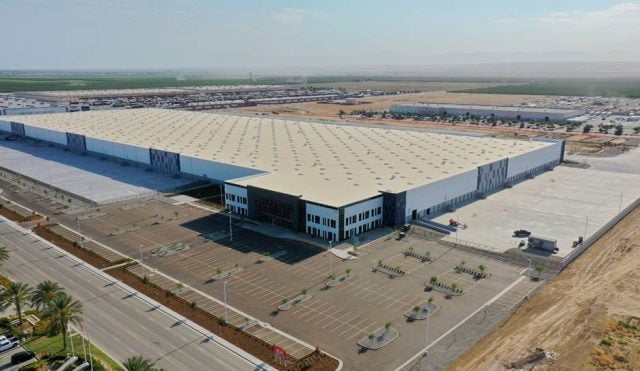LOS ANGELES-Office space used to function strictly as housing the administrative use of a firm. However, in today's diverse economy and the need for firms to recruit the best and brightest talent, office space has become much more, says Neil Resnick, a principal and managing director of the West Los Angeles office of Avison Young. Resnick caught up with GlobeSt.com to further discuss creative space, the local office leasing market and more in an exclusive Q&A.
GlobeSt.com: Tell me about the West Los Angeles office leasing market?
Resnick: Currently the West Los Angeles office vacancy rate is hovering at 13.9% across all submarkets. This market is a dynamic conglomeration of a diversity of users and office product that is just as diverse. It is not uncommon to go from one of the WLA submarkets and see a majority of men and women dressed in very professional attire, to an area that is very casual with no dress code at all. The businesses provide a mix of corporate cultures that serve different industries, audiences and employee types which is ideal from a leasing pool perspective.
GlobeSt.com: How are corporate users changing the way they use office space?
Resnick: Office space used to function strictly as housing the administrative use of a firm. However, in today's diverse economy and the need for firms to recruit the best and brightest talent, office space has become much more. Now, more than ever, or at least over the past 27 years that I have been active in the market, the environment of an office space is a reflection of the character of the firm. It goes beyond the name affixed to the wall behind the receptionist and permeates throughout the space. There is a coolness factor that immediately draws a potential employee to the firm … regardless if it is a law firm or a creative company type. In addition to polished concrete floors, exposed ceilings, bright colors and maximizing technology as it relates to office space, tenants are using new furniture systems to make their space more open, collaborative, and creative. We are seeing more open floor plans and floating kitchens in the middle of the space to encourage this.
GlobeSt.com: Do most users seeking creative space need to convert traditional space to suit their needs?
Resnick: This is a great topic and one that is debated often. Traditional space is largely the conventional dropped ceiling, carpeted floors, some use of glass, some millwork … in other words, completely functional and appropriate for most types of office users. These are not necessarily the users that are looking to portray a sense of creativity the moment a guest or an employee enters the space. While some conventional office buildings have been able to promote a creative environment, there are limitations as to what can and can't be done.
I once visited an advertising agency that had decided to make the 17th floor of a high-rise building its Los Angeles space. The moment you walked into the suite you left the conventional feel that was conveyed in the multi-tenant elevator vestibule and immediately felt that you had entered an old warehouse … space that was more reflective of what would be typically found in an industrial building. While the ceilings couldn't be raised, the use of polished concrete floors, faux brick, and exposed ceilings created an environment that was the antithesis of conventionality. There are the firms like TBWA Chiat / Day who chose to have a building built for them in the 80s designed by Frank Gehry with giant binoculars resting at the front of the building designed by Clause Oldenberg. There was no question that this firm was incredibly creative and that statement was made the moment you saw the exterior of the building. Once they outgrew this space TBWA Chiat / Day relocated to a warehouse building that was retrofitted from administrative office use and their architect, Clive Wilkinson, successfully transformed that experience to reinforce the creativity that was going on inside the four walls.
GlobeSt.com: On the topic of more traditional office space users … what sectors are growing and expanding? Which ones are shrinking?
Resnick: Many firms are shrinking in office size, but that doesn't necessarily indicate that their business is shrinking. To the contrary, appreciating that every square foot is valuable and ultimately contributes to the bottom line, these firms are making sure that their space needs are truly reflective of the current trends and their space is consistent with their functionality.
The prime example of a shrinking sector is the way that law firms are using space. Not that long ago, libraries were a staple of a law firm's office space needs. The need to have a room with rolling files and floors supported for the weight that would correspond to the racks and racks of books has now been replaced by a computer on an attorney's desk with access to all of the research and more that the library may have offered. Law firms have also moved away from large partner offices that could easily accommodate meetings with associates or clients and have replaced those offices with more reasonably sized executive offices and an increased supply of varying-sized meeting rooms. With that said, law firms may be growing in personnel, but not necessarily in space. The same would apply to the fields of accounting and business management. These industries, more than others, want to portray to their clients that their frugality in how they configure their office space is reflective of the way they approach their business and that of who they represent. Then there are server rooms … remember those? They have gone the way of rotary telephones!
GlobeSt.com: How do you advise users on their space needs? Walk me through the process.
Resnick: That is a great question because it implies that there is a process and in our practice, there is. The first thing we do is listen carefully to what is essential to the client. Once the client has had the opportunity to express the good, the bad, and their aspirations for their office space I begin the process of asking very probing questions. What works? What doesn't? What would they change if they could? What's important to their employees and what is important to their visitors? Is their space more focused on doing business or is their office space an immediate advertisement to the people that enter their space? What is that message? How is it articulated?
It is critical to conduct a Programming Analysis to truly define what their needs are. I explain that this exercise is the ultimate template as to what will be used in their search for new office space or in a negotiation with their current landlord that will include a reconfiguration of their space. We talk budget, amenities, transportation, how expenses are handled. Nothing is taken for granted, meaning with new clients, I painstakingly go through a process that outlines their economic exposure, and with ongoing clients I remind them of the exercises we have done previously on that last go-round. There are many nuances related to the effective and professional representation of a client considering office space, but the bottom line is that a client's office space is considerably more than just a place to go to work. Any place that commands more waking hours than what an employee will enjoy in their respective homes is important enough to make sure that the job is done right.
© 2025 ALM Global, LLC, All Rights Reserved. Request academic re-use from www.copyright.com. All other uses, submit a request to [email protected]. For more information visit Asset & Logo Licensing.








